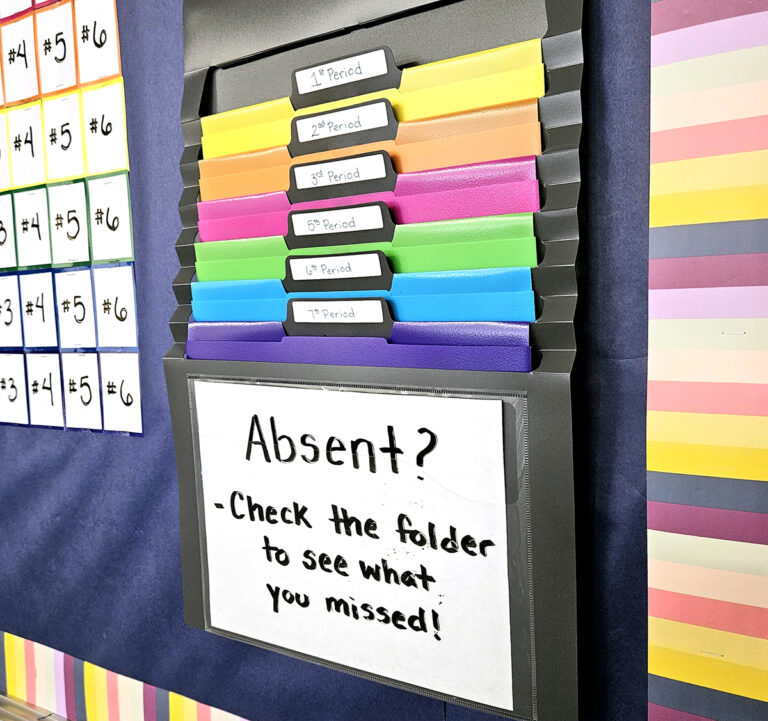Regardless of your current teaching structure, everyone is trying to do more with less. Art teachers are trying to maximize their instructional time in the classroom while implementing new sanitizing measures or seeing students less frequently. Similarly, new teaching environments cause teachers to stay later and come in earlier to prepare for the next lesson. It’s important to continue to analyze and refine your practices to maintain a sustainable and manageable workload. One way to help you and your students is to implement small routines and changes that actually save you time and allow you to reallocate those minutes back to yourself and your students. Here are some ideas to help during this hectic time.

1. Use a voice to text program.
Using programs like SpeechTexter can be an easy way to do some of your work without being attached to a keyboard. This will allow you to draft an email, provide feedback to a student, make your to-do list while you go on a walk, drive your car, etc. You might find talking your response out is even quicker than typing and trying to craft the right message. For teachers online, you might also enjoy this short break from typing. You can quickly review your message and copy and paste it where you need it.
Now Is the Perfect Time to Avoid Burnout and Practice Resilience
2. Enable email rules and filters.
During this time of social distancing and online teaching, email has become an indispensable tool. Emails have taken the place of some meetings and hallway conversations. And, if you’re using a learning management software like Google Classroom, you might also be getting inundated with emails updating you on student progress. Streamline your workflow by creating folders and rules or filters for your inbox that can easily sort some of your messages. This can help you better manage your inbox and target a specific destination for certain messages.
3. Use video recordings.
If you’re looking for an easy way to be in two places at once, try creating videos. Programs like Screencastify can help you make a quick video to play for students to welcome them to class, show a demonstration, explain a project, etc. While these play for students, either in the classroom or online, you can be finishing other tasks.
4. Incorporate rubrics to give feedback.
Giving individual feedback to each student can be valuable and incredibly time-consuming. Descriptive rubrics with clear language and criteria are important tools for feedback. Circling or clicking on boxes on the rubric is a lot quicker than writing feedback to each student, and the language can still give them the feedback they need to grow.

5. Grading in the classroom and cameras.
Having students turn in assignments during online learning can sometimes be a laborious process. Opening or downloading each image to grade can take a few minutes that add up to a large chunk of time. One solution is to have students hold up their work to the screen for you to grade and check at the moment. In the classroom, you can walk around and grade as you briefly share with students a few points about their piece.
6. Don’t grade everything.
The pressure to grade everything students do can be real. You might fear how not grading something can impact student engagement. If they don’t get points for it, will they do it? If you’re bogged down with too many assignments to grade, maybe identify some assignments that don’t need to be graded. You can still collect assignments to gauge student ability and progress but save time by not formally assessing each assignment. For example, you might find it helpful to simply review the activities and grade larger projects. It could actually be helpful for students to learn that not everything is transactional, and sometimes they are doing things strictly for their own learning and experience.
A Simple Way to Maximize Your Planning Time
7. Manage breakout rooms.
When you break students into groups, whether online or in-person, it can often take an extra minute or two for the students to decide who is actually going to go first. These precious minutes can be won back by dictating the order in a way that’s quick and obvious. For example, help the students get started quicker by announcing, “The person with the longest hair goes first.”
8. Adjust your curriculum.
There is often a direct impact on the curriculum with the loss of instructional time. You might be able to combine some objectives, but others you might not be able to get to. While this might seem obvious, it can be challenging to let go of some former lessons. Save yourself time by making some difficult decisions and not trying to cram everything in, thus allowing you more time to focus on the pieces you think are most appropriate.
How Setting Goals Can Cure Time Management Issues
9. Utilize parent volunteers.
Preparing materials for students might be taking on a whole new meaning for in-person and online teaching. Whether it’s packing art kits or separating materials into bags, think about how parent volunteers can save you some work time. Some tasks can also be done at a parent’s house, which might help you navigate potential roadblocks like no visitors being allowed in the building.

10. Utilize student aides.
Like parent volunteers, think about how student aides can help you with any tasks that could include materials preparation, cleaning, sorting, etc. Their responsibilities might be limited based on your own constraints, but try to identify some things they can do to help you. You could also see if your school can offer community service hours for student helpers.
3 Timesaving Tips To Try Today
In many ways, you might feel like a first-year teacher all over again as you navigate a new school environment. Just as in your former teaching world, it took time to refine your practices and continuously make adjustments to make things work for you. Having manageable and sustainable practices is critical right now for the betterment of you and your students. Hopefully, these ideas can help you save a few minutes here and there that add up to a big change.
What other ways can art teachers save time in their work?
What is the most time-consuming aspect of your current teaching model?
Magazine articles and podcasts are opinions of professional education contributors and do not necessarily represent the position of the Art of Education University (AOEU) or its academic offerings. Contributors use terms in the way they are most often talked about in the scope of their educational experiences.





